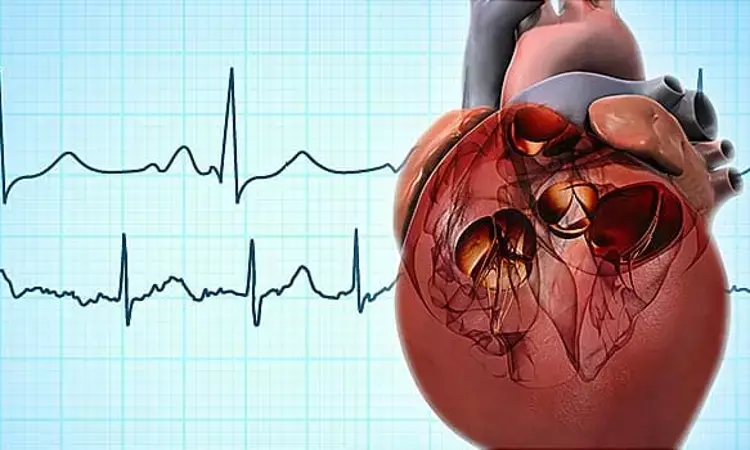- Home
- Medical news & Guidelines
- Anesthesiology
- Cardiology and CTVS
- Critical Care
- Dentistry
- Dermatology
- Diabetes and Endocrinology
- ENT
- Gastroenterology
- Medicine
- Nephrology
- Neurology
- Obstretics-Gynaecology
- Oncology
- Ophthalmology
- Orthopaedics
- Pediatrics-Neonatology
- Psychiatry
- Pulmonology
- Radiology
- Surgery
- Urology
- Laboratory Medicine
- Diet
- Nursing
- Paramedical
- Physiotherapy
- Health news
- Fact Check
- Bone Health Fact Check
- Brain Health Fact Check
- Cancer Related Fact Check
- Child Care Fact Check
- Dental and oral health fact check
- Diabetes and metabolic health fact check
- Diet and Nutrition Fact Check
- Eye and ENT Care Fact Check
- Fitness fact check
- Gut health fact check
- Heart health fact check
- Kidney health fact check
- Medical education fact check
- Men's health fact check
- Respiratory fact check
- Skin and hair care fact check
- Vaccine and Immunization fact check
- Women's health fact check
- AYUSH
- State News
- Andaman and Nicobar Islands
- Andhra Pradesh
- Arunachal Pradesh
- Assam
- Bihar
- Chandigarh
- Chattisgarh
- Dadra and Nagar Haveli
- Daman and Diu
- Delhi
- Goa
- Gujarat
- Haryana
- Himachal Pradesh
- Jammu & Kashmir
- Jharkhand
- Karnataka
- Kerala
- Ladakh
- Lakshadweep
- Madhya Pradesh
- Maharashtra
- Manipur
- Meghalaya
- Mizoram
- Nagaland
- Odisha
- Puducherry
- Punjab
- Rajasthan
- Sikkim
- Tamil Nadu
- Telangana
- Tripura
- Uttar Pradesh
- Uttrakhand
- West Bengal
- Medical Education
- Industry
Edoxaban noninferior to vitamin K antagonists for atrial fibrillation after successful TAVR: ENVISAGE-TAVI AF trial

Delhi: Findings from the ENVISAGE-TAVI AF trial showed edoxaban to be noninferior to vitamin K antagonists in patients with mainly prevalent atrial fibrillation who underwent successful transcatheter aortic valve replacement (TAVR). The noninferiority was determined by a hazard ratio margin of 38% for a composite primary outcome of adverse clinical events. However, edoxaban was associated with a higher risk of major bleeding than with vitamin K antagonists.
Nicolas M. Van Mieghem and colleagues aimed to determine the role of direct oral anticoagulants as compared with vitamin K antagonists in patients with prevalent or incident atrial fibrillation as the indication for oral anticoagulation after successful TAVR. The study was published in the New England Journal of Medicine on August 28, 2021.
For achieving their objective, the researchers conducted a multicenter, prospective, randomized, open-label, adjudicator-masked trial. The primary efficacy outcome was a composite of adverse events consisting of death from any cause, myocardial infarction, ischemic stroke, systemic thromboembolism, valve thrombosis, or major bleeding. The primary safety outcome was major bleeding.
A total of 1426 patients were enrolled (713 in each group). The mean age of the patients was 82.1 years, and 47.5% of the patients were women.
The study yielded the following findings:
- Almost all the patients had atrial fibrillation before TAVR. The rate of the composite primary efficacy outcome was 17.3 per 100 person-years in the edoxaban group and 16.5 per 100 person-years in the vitamin K antagonist group (hazard ratio, 1.05).
- Rates of major bleeding were 9.7 per 100 person-years and 7.0 per 100 person-years, respectively (hazard ratio, 1.40); the difference between groups was mainly due to more gastrointestinal bleeding with edoxaban.
- Rates of death from any cause or stroke were 10.0 per 100 person-years in the edoxaban group and 11.7 per 100 person-years in the vitamin K antagonist group (hazard ratio, 0.85).
"In patients with mainly prevalent atrial fibrillation who underwent successful TAVR, edoxaban was noninferior to vitamin K antagonists as determined by a hazard ratio margin of 38% for a composite primary outcome of adverse clinical events," wrote the authors. "The incidence of major bleeding was higher with edoxaban than with vitamin K antagonists."
Reference:
The study titled, "Edoxaban versus Vitamin K Antagonist for Atrial Fibrillation after TAVR," is published in the New England Journal of Medicine.
DOI: https://www.nejm.org/doi/pdf/10.1056/NEJMoa2111016
Dr Kamal Kant Kohli-MBBS, DTCD- a chest specialist with more than 30 years of practice and a flair for writing clinical articles, Dr Kamal Kant Kohli joined Medical Dialogues as a Chief Editor of Medical News. Besides writing articles, as an editor, he proofreads and verifies all the medical content published on Medical Dialogues including those coming from journals, studies,medical conferences,guidelines etc. Email: drkohli@medicaldialogues.in. Contact no. 011-43720751


